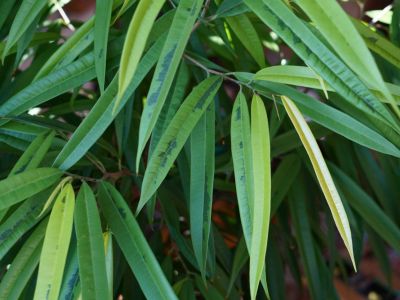Ficus Banana Leaf Plants
Ficus is the Latin word for fig and is also the genus name of about 800 fig species. Figs are woody trees, shrubs, or vines native to Asia, Australia, and Africa. Those species cultivated for home gardens or backyards either produce edible fruit or are grown for their ornamental value. Banana leaf ficus trees are shrubs or small trees with long, saber-shaped leaves. The leaves emerge red, but later turn dark green and become leathery. They droop gracefully from the tree, adding an exotic or tropical look to your home. Ficus banana leaf plants can be grown with one stem, multiple stems, or even braided stems. The crown is open and irregular.
Growing Banana Leaf Ficus
Like the weeping fig, the banana leaf ficus tree grows into a small tree, up to 12 feet (3.5 m.) tall, and is usually grown as a houseplant. As a tropical fig, it can only grow outdoors in U.S. Department of Agriculture plant hardiness zone 11. Growing banana leaf ficus plants successfully is mostly a matter of finding the correct location for the shrub. The banana leaf fig needs an indoor location with bright filtered light that is protected from drafts. Use well-drained soilless potting mix for growing banana leaf ficus plants. When it comes to banana leaf ficus care, your temptation may be to overwater the tree. However, you must resist. Keep the soil slightly moist and avoid overwatering. If you apply an inch (2.5 cm.) of organic mulch, like wood chips, it helps keep that moisture in. Fertilizer is a part of banana leaf ficus care. Feed your ficus banana leaf plant with a general, water-soluble fertilizer every other month in spring, summer, and fall. Do not fertilize the plant in winter. You can prune the plant a little if you think it is necessary to shape it.
